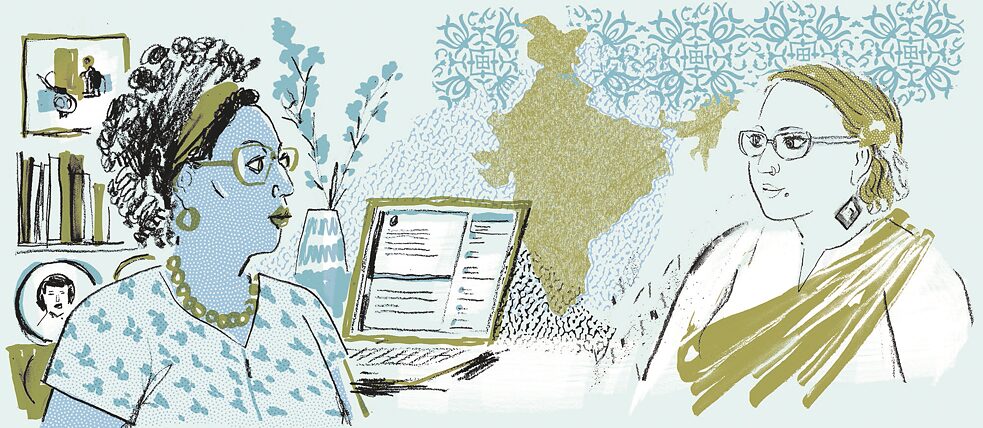India's New Normal
Is Distance Learning an Equaliser in an Unequal Education System?

As brick-and-mortar educational institutions remained shut, digital education became the new normal. Filmmaker and author Paromita Vohra starts the letter exchange by answering how sustainable this model in India is. Will digital learning close or intensify the educational gaps or take a new form altogether?
By Paromita Vohra
For a long time, in India, distance education - called a correspondence course - was considered low status education, sought by those who were either nowhere near good education or could not afford full time education. Now, all education is distance education. Is it an equaliser?
India’s digital divide, which mirrors its class and caste dynamics has shown that the new normal of distance education could potentially deepen the old divides. For many, the pandemic has meant distance from education itself. The access to devices and internet in some households being limited, children drifted away from the formal context of a school, the really small ones having now forgotten how to read altogether. For other children, devices were plentiful, but it has meant learning a new vocabulary of being.
Classroom Connections
Classrooms are a world. In them we encounter difference, even as they strive to produce us into sameness. The mainstream educational system has been built to fit individuals into a social system, that is often based on conformity and hierarchy. Children conform, but they also buck the conformity through acts of rebellion, through subversion of discipline in the smallest of ways: passing notes in class, whispering, making poor excuses for not doing their homework, mocking the teacher. In this way, they also learn to form connections of friendship that are not ordained by education alone, but facilitated by the place of education.The zoom-room classroom may at first seem atomising. But in many ways it maps the formations of physical life onto itself. “My connection is unstable”, “My camera is not working”, become the new “The dog ate my homework”. Students form chat-groups to include and exclude each other. They form connections in private rooms. They bond over popular culture as always, activities they emulate from video tutorials - slime making, crotchet, science projects -, learn more about the world in their free time. The search for closeness, despite distance persists. At the same time, the ability to disconnect from conflict or accountability also become easy, through the disconnection from the zoom room. On the one hand, students are cushioned from some of the hardships of school bullying by the simultaneous comfort of being at home and cared for. On the other hand, the distance from school, for a neglected child, isolates them even further.
Have students forgotten how to work together?
Can friendships, learning to accept each other, learning to work alongside others and make room for each other almost intuitively and naturally take place when we work alone, and come together as individual beings? Is the human ability for co-operation challenged by these distanced learnings?I spoke to two teachers. One, in an elite film school, noted that as students started returning to in-person classes in September 2021, while they were technically proficient, and had learned things well as individuals, they struggled to work together with others, as a crew or a team.
Another noted with astonishment that after a year of working at a distance, she found students had developed an engaged interest in the subject at hand, plagiarised less from the internet, though it was in fact easier for them to do so, and even worked on joint projects very smoothly. Moreover, they seemed to have taught themselves a variety of things, not imposed by the syllabus. The fear of anarchy that distance education might unleash on the classroom, has not exactly come to be. Moreover the question of what is learning has surfaced in a fresh way, once the rigidities of classrooms and syllabi have ceased to function.
As the pandemic ebbs and flows, perhaps the reality of life might be phygital – a mixture of the physical and digital – in more formal ways. On the one hand this raises questions of whether the digital divide will become a different social divide, whether students who find it easier to be at home, will lose the skills of being part of groups, never learn the habits of friendship and teamwork. On the other hand, it would become possible to make more inclusive classrooms. The inclusion of students with disabilities or mental health issues to find ways to be part of a classroom with others through the hybrid future seems inevitable. As with everything, in education too, the pandemic shows us that only a greater fluidity will help us to bridge distances.
So much for the situation in India. I wonder if the circumstances in Brazil are anything similar. Therefore, I would like to ask Rosana Paulino: Which questions regarding Brazil's education system arise as a result of the pandemic?